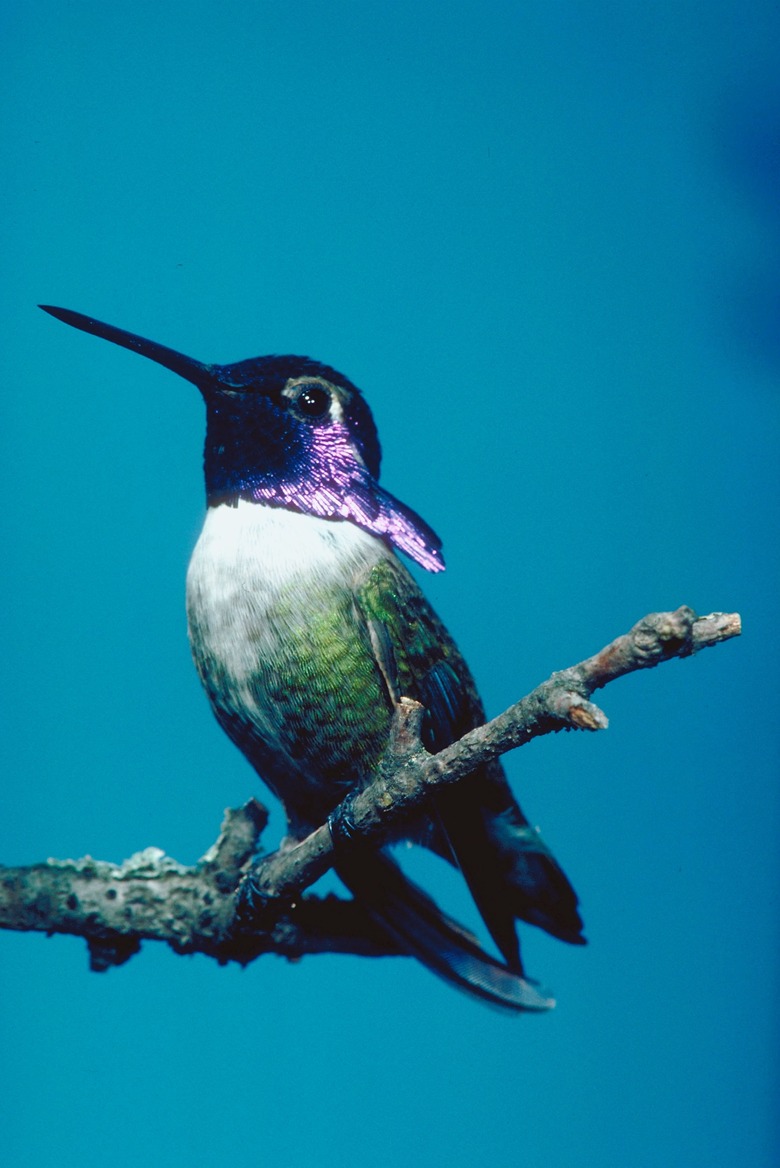The Differences Between Hummingbird & Oriole Feeders
Inviting hummingbirds and orioles to visit your yard, patio or balcony can really add enjoyment to your birdwatching experience. While both species of birds will consume nectar from your feeders, it is best to provide one type for your hummingbird visitors, and another for the orioles. These birds have physical differences that can make it difficult for them to eat from nectar feeders not built for their needs.
Hummingbird Feeders
Step 1
Hummingbird feeders are often manufactured with at least a small amount of red coloring because it is the color these birds prefer. But hummingbirds will feed from nectar feeders in other colors, just as they will from flowers. You can choose from a variety of sizes and shapes, but these feeders always have one common factor; small feeding holes through which the hummingbirds sip the nectar. Many have perches for the birds, but it is not a required feature; this species does not need to perch while feeding.
- Inviting hummingbirds and orioles to visit your yard, patio or balcony can really add enjoyment to your birdwatching experience.
- You can choose from a variety of sizes and shapes, but these feeders always have one common factor; small feeding holes through which the hummingbirds sip the nectar.
Oriole Feeders
Step 1
Orioles will feed from your hummingbird feeders if they have perches, but they are really not made to accommodate them. These larger birds may pull on the tips of the feeding holes, trying to widen them in order to reach the nectar and may try to intimidate the hummingbirds. Providing separate feeders for orioles will make everyone happier. Oriole feeders almost always come in the color orange and have large perches. Set your oriole feeders out about two weeks before the first birds are due to arrive for the season. These birds are not strictly nectar-feeders, and some Baltimore oriole feeders provide places to spear orange halves. Many orioles like grape jelly, and some feeders come with an area to offer this treat as well. As the season gets later, orioles switch to an insect-based diet, and you can offer them mealworms from these dishes instead.
- Orioles will feed from your hummingbird feeders if they have perches, but they are really not made to accommodate them.
- As the season gets later, orioles switch to an insect-based diet, and you can offer them mealworms from these dishes instead.
Nectar
Step 1
Hummingbirds and orioles will eat the same nectar. It's very easy to make you own, and it is cheaper than purchasing a prepared product. There is no need to color the nectar red; the birds will find your feeders without it. The recipe for nectar is simple; one part granulated sugar to four parts water. Bring the water and sugar mixture to a boil, stirring until all sugar dissolves. Allow your nectar to cool completely before filling your feeders. Store any unused nectar in your refrigerator. Change the nectar in your feeders every few days because it can become cloudy. Black mold may also appear, causing illness in your feathered visitors.
- Hummingbirds and orioles will eat the same nectar.
- There is no need to color the nectar red; the birds will find your feeders without it.
Cleaning Your Feeders
Step 1
Clean your feeders with a solution of one part white vinegar to four parts water once a week. Purchasing a few small bottle brushes with bendable stems may help you to reach any tiny areas that have become dirty. You may also try placing several grains of uncooked rice in your feeders, filling them partially with the vinegar solution and giving them several good shakes to remove dirt. Rinse your feeders well with hot water several times before refilling with nectar.
